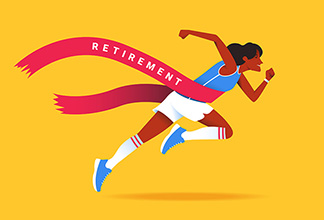Can You Tweak Your Way to Investing Success?
Written by Rita Silvan
Published on August 28, 2019
minute read
Share:
Gone are the days of the mega-makeover. Today, "tweakments" — anything from a 30-minute vitamin IV drip for fitness enthusiasts to infusion micro-needling for skin repair— are de rigueur for personal care. Small adjustments can be both less expensive and less time consuming than major overhauls, and they aim to correct minor issues before they become bigger problems. Could self-directed investors benefit from tweakments, too? Regular efforts to tweak, or rebalance, a portfolio could help keep it in "good health" and may even be time-, cost- and tax-efficient.
Asset Mixology 101
Many investors own a mix of asset classes, like equities, bonds, cash and real estate, because they tend to perform differently in various market cycles. How much an investor allocates to each is based on factors such as investment time horizon, risk tolerance, financial goals and income needs. For example, someone with a high risk tolerance and a long-term investment horizon might allocate more to equities, which have the highest potential return due to their higher risk level. Someone on the other side of the risk spectrum may choose to allocate more to lower-risk, lower-reward type investments, such as bonds. Asset mix is a key driver of performance in addition to the total return you get from your investments (capital gains plus income received).
Is Rebalancing for You?
Portfolios can gradually drift away from their original asset allocation, which may change its risk/return profile. Imagine a portfolio that starts with a 60/40 allocation to stocks and bonds. If stocks outperform bonds, it might tilt toward 70 per cent equities and 30 per cent bonds, or even more, exposing the portfolio to greater equity risk.
Rebalancing can be difficult for some investors for various reasons, particularly when emotions factor in. During a bull market, for instance, investors may be loath to give up the prospect of future equity gains. Or an aversion to loss may cause reluctance to sell an underperforming investment.
If you're looking at a rebalance, some investors choose to start with the broad asset classes — equities, fixed income (bonds or GICs, for example), cash — and tweak from there. Here are three straightforward ways to go about a rebalance.
1. Time Tweaks
This is probably the easiest and least emotionally challenging way to rebalance asset allocation. Simply choose a date — for example, near the end of the calendar year as part of tax planning. When that time comes, ask yourself: Where is my portfolio now? If it's drifted too far from your original allocation, then it may be time to consider selling investments that have become overweight in your portfolio and buying investments in asset classes you want to increase.
2. Threshold Tweaks
This method is based on how far your asset mix has diverged from your original plan. First, decide on your threshold tolerance. For example, if you set your threshold to a 10 per cent divergence in either direction, then only when an asset class moves more than 10 per cent away from the original weighting would you tweak. Let's assume you have a 60/40 equity/bond portfolio. A 10 per cent band means the acceptable range can go as far as 70/30 or 50/50 before you step in. (Note that this tweaking style requires regular portfolio monitoring.)
3. Combo Plan
Another option is to review your portfolio on a calendar basis, say annual or semi-annual, but tweak only if it is out of the bounds of the threshold.
What's the right amount of "tweaking"? There's no right answer, but it's important to keep a couple of things in mind. Depending on your portfolio mix, too little (or no rebalancing at all) could leave you taking on more risk than you intended, while too many tweaks might contribute to increased costs for trading commissions, thereby lowering your overall returns.
RBC Direct Investing Inc. and Royal Bank of Canada are separate corporate entities which are affiliated. RBC Direct Investing Inc. is a wholly owned subsidiary of Royal Bank of Canada and is a Member of the Investment Industry Regulatory Organization of Canada and the Canadian Investor Protection Fund. Royal Bank of Canada and certain of its issuers are related to RBC Direct Investing Inc. RBC Direct Investing Inc. does not provide investment advice or recommendations regarding the purchase or sale of any securities. Investors are responsible for their own investment decisions. RBC Direct Investing is a business name used by RBC Direct Investing Inc. ® / ™ Trademark(s) of Royal Bank of Canada. RBC and Royal Bank are registered trademarks of Royal Bank of Canada. Used under licence. © Royal Bank of Canada 2019. All rights reserved.
The views and opinions expressed in this publication are for your general interest and do not necessarily reflect the views and opinions of RBC Direct Investing. Furthermore, the products, services and securities referred to in this publication are only available in Canada and other jurisdictions where they may be legally offered for sale. If you are not currently resident of Canada, you should not access the information available on the RBC Direct Investing website.
Explore More

Should I Invest or Pay Down My Mortgage?
Consider these four questions
minute read

As Many Head Back to the Office, Where Could Investors See Changes?
How returning to in-person work could affect a range of investments
minute read

Considering the FIRE Lifestyle? Here’s What Your Investments Might Look Like
We asked three people how they created financial independence and retired early
minute read
Inspired Investor brings you personal stories, timely information and expert insights to empower your investment decisions. Visit About Us to find out more.







